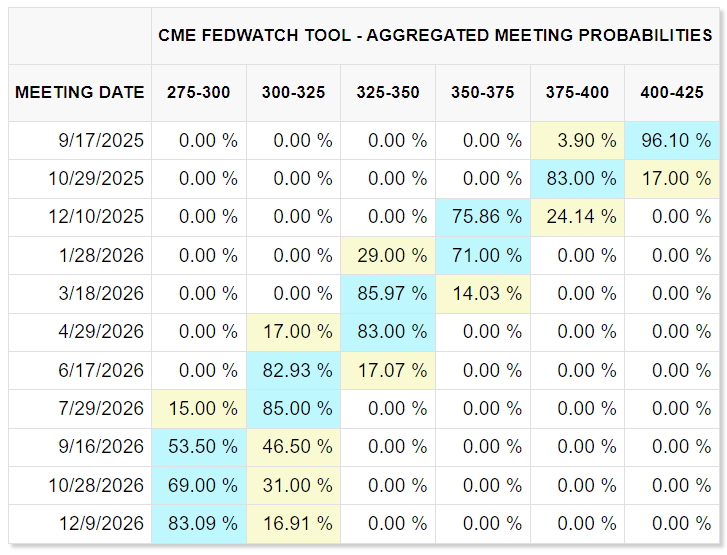Dow Jones Industrial Average drops as markets await Fed
- The Dow recoiled on Tuesday, trimming some off the top as investors brace for the Fed’s latest rate call.
- The FOMC has started its two-day interest rate decision process; a rate cut is broadly expected.
- The Fed’s dot plot adjustment will be the key datapoint for markets this week.
The Dow Jones Industrial Average (DJIA) shed 275 points at its lowest on Tuesday as investors buckle down ahead of the latest interest rate decision from the Federal Reserve (Fed). The Federal Open Market Committee (FOMC) will wrap up two days of deliberations on Wednesday and deliver what is broadly expected to be the Fed’s first interest rate cut since pausing rate moves in January.
Rate cuts incoming, but how many?
A quarter-point interest rate cut is widely anticipated this week, but the key datapoint for markets will be the FOMC’s update to its Summary of Economic Projections, or dot plot of policymakers’ own interest rate expectations. Three straight rate cuts through the rest of the year are baked into interest rate markets, and investors will be looking for the Fed to play ball.

US Retail Sales came in much stronger than expected, rising 0.6% for the second month in a row in August. Core Retail Sales also accelerated to 0.7% MoM. However, Retail Sales data doesn’t differentiate between price changes or an actual increase in sales volume. August’s retail data pleased both sides of the interest rate discussion: strong retail activity, coupled with slumping hiring data, gives the Fed more runway to cut interest rates. Meanwhile, the no-cut camp will point to retail upswings to show that a tariff-fueled resurgence of inflation is a real and growing problem within the US economy.
Dow Jones daily chart

Dow Jones FAQs
The Dow Jones Industrial Average, one of the oldest stock market indices in the world, is compiled of the 30 most traded stocks in the US. The index is price-weighted rather than weighted by capitalization. It is calculated by summing the prices of the constituent stocks and dividing them by a factor, currently 0.152. The index was founded by Charles Dow, who also founded the Wall Street Journal. In later years it has been criticized for not being broadly representative enough because it only tracks 30 conglomerates, unlike broader indices such as the S&P 500.
Many different factors drive the Dow Jones Industrial Average (DJIA). The aggregate performance of the component companies revealed in quarterly company earnings reports is the main one. US and global macroeconomic data also contributes as it impacts on investor sentiment. The level of interest rates, set by the Federal Reserve (Fed), also influences the DJIA as it affects the cost of credit, on which many corporations are heavily reliant. Therefore, inflation can be a major driver as well as other metrics which impact the Fed decisions.
Dow Theory is a method for identifying the primary trend of the stock market developed by Charles Dow. A key step is to compare the direction of the Dow Jones Industrial Average (DJIA) and the Dow Jones Transportation Average (DJTA) and only follow trends where both are moving in the same direction. Volume is a confirmatory criteria. The theory uses elements of peak and trough analysis. Dow’s theory posits three trend phases: accumulation, when smart money starts buying or selling; public participation, when the wider public joins in; and distribution, when the smart money exits.
There are a number of ways to trade the DJIA. One is to use ETFs which allow investors to trade the DJIA as a single security, rather than having to buy shares in all 30 constituent companies. A leading example is the SPDR Dow Jones Industrial Average ETF (DIA). DJIA futures contracts enable traders to speculate on the future value of the index and Options provide the right, but not the obligation, to buy or sell the index at a predetermined price in the future. Mutual funds enable investors to buy a share of a diversified portfolio of DJIA stocks thus providing exposure to the overall index.

